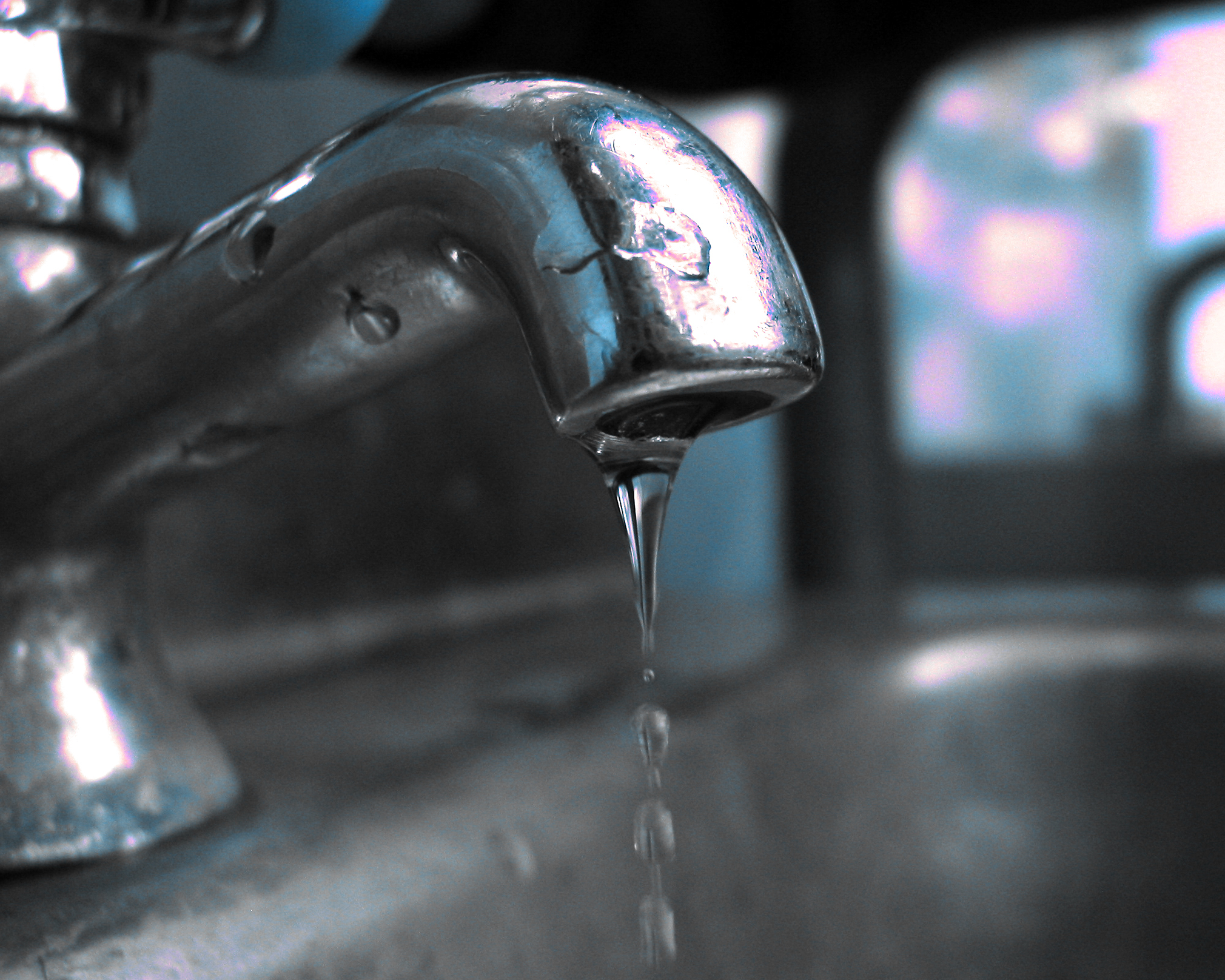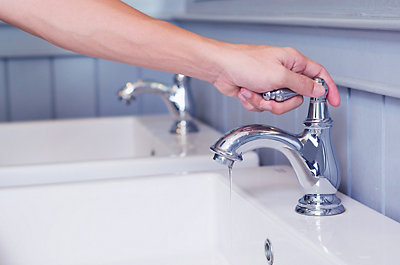What It's Crucial to Repair a Leaking Faucet
What It's Crucial to Repair a Leaking Faucet
Blog Article
We've found this article pertaining to Why Are My Faucets Dripping (And Can I Fix It Myself)? listed below on the internet and accepted it made perfect sense to discuss it with you on this site.

Dripping taps may appear like a minor hassle, but their influence surpasses simply the inconvenience of the sound. From drainage to sustaining unnecessary financial prices and health risks, ignoring a trickling faucet can result in various effects. In this post, we'll explore why it's essential to resolve this typical home concern without delay and successfully.
Wastefulness of Water
Ecological Impact
Trickling faucets contribute dramatically to water waste. According to the Environmental Protection Agency (EPA), a solitary faucet trickling at one drip per second can waste greater than 3,000 gallons of water per year. This not just pressures water sources but additionally affects ecosystems and wild animals dependent on them.
Step-by-Step Overview to Repairing a Dripping Tap
Tools Called for
Before trying to repair a trickling faucet, collect the required devices, consisting of a flexible wrench, screwdrivers, replacement components (such as washers or cartridges), and plumber's tape.
Usual Faucet Issues and Their Solutions
Recognize the type of tap and the details issue creating the drip. Common troubles include worn-out washing machines, corroded shutoff seats, or faulty O-rings. Describe manufacturer directions or on-line tutorials for step-by-step support on repair services.
Financial Costs
Enhanced Water Costs
Beyond the environmental influence, dripping faucets can blow up water bills significantly. The gathered wastage gradually converts into greater utility expenditures, which could have been prevented with prompt fixings.
Potential Building Damage
Furthermore, extended trickling can lead to damage to fixtures and surface areas surrounding the faucet. Water build-up can create discoloration, corrosion, and even structural problems if left ignored, leading to added repair costs.
Health Issues
Mold and Mold Growth
The constant existence of wetness from a leaking tap produces an excellent environment for mold and mildew growth. These fungi not just compromise indoor air quality but also pose health risks, particularly for individuals with respiratory conditions or allergic reactions.
Waterborne Conditions
Stationary water in trickling taps can end up being a breeding place for germs and various other virus, raising the threat of waterborne conditions. Pollutants such as Legionella germs prosper in stagnant water, potentially leading to serious illnesses when consumed or breathed in.
DIY vs. Expert Repair work
Benefits and drawbacks of DIY Repair Work
While some may try to take care of a leaking faucet themselves, DIY fixings feature their own set of obstacles. Without correct understanding and tools, do it yourself efforts can intensify the issue or bring about incomplete repairs, lengthening the issue.
Benefits of Working With an Expert Plumber
Hiring a specialist plumber makes sure that the underlying reason for the dripping tap is dealt with successfully. Plumbings have the know-how and devices to detect and repair tap problems efficiently, conserving time and minimizing the threat of further damages.
Environmental Duty
Individual Contribution to Preservation
Taking obligation for dealing with leaking taps lines up with more comprehensive efforts towards water conservation and ecological sustainability. Every individual's activities collectively make a considerable impact on protecting precious sources.
Sustainable Living Practices
By focusing on punctual repair work and taking on water-saving practices, people contribute to sustainable living techniques that benefit both present and future generations.
Safety nets
Regular Maintenance Tips
To stop leaking taps, carry out regular upkeep such as cleaning up aerators, checking for leaks, and replacing damaged components promptly. Furthermore, take into consideration installing water-saving gadgets or updating to more reliable fixtures.
Significance of Prompt Services
Addressing leaking taps as quickly as they're seen avoids additional water waste and possible damage, ultimately saving both water and money in the future.
Influence On Property Value
Perception of Well-Maintained Residential Property
Keeping a property in good condition, including dealing with maintenance problems like leaking taps, boosts its regarded worth and worth amongst possible customers or lessees.
Influence on Resale Value
Properties with well-maintained plumbing fixtures, including faucets, command higher resale values in the real estate market. Attending to leaking faucets can contribute to a positive impression throughout residential or commercial property evaluations and negotiations.
Conclusion
Addressing a dripping tap surpasses plain convenience; it's an important step towards saving water, decreasing financial costs, and guarding wellness and building. Whether via DIY repair work or professional assistance, doing something about it to deal with leaking faucets is a small yet impactful means to advertise liable stewardship of resources and contribute to a much healthier, a lot more sustainable future.
How to Fix a Leaky Faucet: Step-by-Step Repair Guide
A leaky faucet may seem like a simple annoyance, but if it's not fixed promptly, that leak could cost hundreds to potentially thousands. From water damage to mold, mildew, and high water bills, even a tiny leak can be catastrophic if left unattended. Damage like this can even affect the overall value of your home, so it's important to take the right approach for leaky faucet repair. You may need the help of a plumber in some cases, but we've got a few tips you can try on how to fix a leaky faucet before calling the pros.
Four Faucet Types
When you're learning how to fix a leaky faucet, the first step is knowing what kind of faucet you're working with! There are four common types.
Cartridge Faucets
Cartridge faucets come in one- or two-handled varieties. In one-handled cartridge faucets, hot and cold water combines in a single cartridge. In the two-handled versions, hot and cold water are controlled separately and mixed in the faucet.
Ball Faucets
Ball faucets have a single lever you push up and down to adjust the pressure and rotate to change the temperature. A slotted metal ball controls the amount of water allowed into the spout.
Compression Washer Faucets
They're the oldest type of faucet, but they're still used in many homes — especially older ones. Compression faucets have two separate handles that, when turned, raise or lower the washer that seals a water valve. This valve stops water from flowing through the faucet when it is turned off.
Disc Faucets
Disc faucets rarely need to be repaired due to their maintenance-free design. The water flow is controlled by two discs — the upper one raises and lowers against a fixed lower disc, creating a watertight seal. If your disc faucet starts leaking, you may need to replace the seals or clean residue buildup from the inlets.
Fixing a Leaky Faucet
Step 1: Turn Off the Water
Whether you're learning how to fix a leaky bathtub faucet or how to fix a leaky kitchen faucet, always turn off the water supply to your working area when you're fixing a leak. The last thing you want is a flood added to your list of things to fix.
Look for the shutoff valves below your sink or around the tub and turn them clockwise to stop the water flow. If your faucet doesn't have shutoff valves, you may need to turn off the water for the whole house. Check to make sure it's off by turning the faucet on. If nothing comes out, you're ready to start the repair.
Step 2: Take Apart the Faucet
How you disassemble your faucet depends on the type of fixture you have. You can use a flathead screwdriver to remove the caps on top of the handle or handles for cartridge and compression faucets. Inside, you should see handle screws. Unscrew these with a screwdriver to remove the handle.
Disc- and ball-style faucets will typically have an inlet screw near the handle, and removing that will reveal the interior of the faucet.
Detach the Valve Stem
For cartridge- and compression-style faucets, you'll see the inner valve stem or cartridge once you remove the faucet handles. If you have a compression faucet, unscrew the brass valve stem. If you have a cartridge faucet, pull out the cartridge. If your cartridge has been in place for a while, it may require some tools or extra force to remove it due to mineral deposits.
Examine and Replace Parts
Once you've removed the parts, check them out to confirm what needs to be replaced. You may see corroded rubber washers, O-rings, stems, or cartridges. On a ball-style faucet, check the seats and springs for damage.
If you need to repair a leaky disc faucet, check the inlet and seals on the lower disc.
Once you determine what parts must be replaced, visit your local hardware store. Bring the damaged parts with you to ensure you can purchase the correct components to replace them.
Clean Valves and Faucet Cavity
If you've removed a stem or cartridge, you may notice mineral buildup in the faucet's threads. Use white vinegar to clean the valve seat by soaking it for a few minutes, then scrub it away with a soft toothbrush and rinse with warm water. You can also clean the interior of the faucet in the same way.
Reassemble the Faucet
Once your faucet is cleaned and the required parts have been replaced, it's time to reassemble it. Put the pieces back together and slowly turn the water supply back on. Doing this slowly is crucial because too much initial water pressure can damage the new hardware you've just installed.
https://homewarranty.firstam.com/blog/how-to-fix-leaky-faucet

I discovered that write up about Why Is It Important To Fix Your Leaking Tap/Faucet? when doing a search on the web. Loved our piece? Please quickly share it. Help another person check it out. I am grateful for being here. Revisit us soon.
Report this page